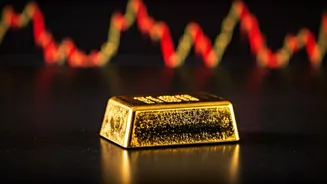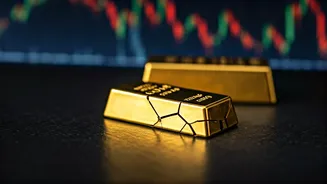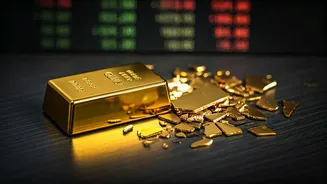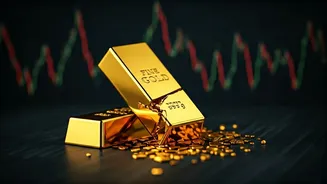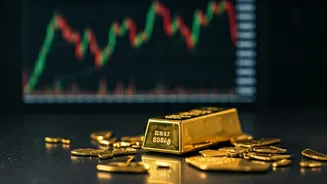Market's Swift Retreat
The gold market recently underwent a profound correction, registering its biggest single-day slump in a decade. This downturn in gold prices caused a stir
among investors and market watchers. The drop signaled a shift in investor sentiment, as various economic forces began to reshape the outlook for gold. The magnitude of the decline underscored the sensitivity of the gold market to fluctuations in global economic conditions, including changes in currency valuations, interest rate expectations, and shifts in risk appetite. Investors often see gold as a safe-haven asset, but the recent market movements suggest a broader reassessment of its role amid current market uncertainties. This reassessment is influenced by factors ranging from inflationary pressures to geopolitical developments, thereby adding to the complexities of forecasting gold’s future performance. Furthermore, the event prompted a review of gold’s historical performance and its behavior during times of economic turbulence, contributing to a more nuanced comprehension of its market dynamics and value as a hedge against financial instability.
Expert Insights Diverge
Following gold's significant price drop, market analysts have presented a variety of forecasts. Some experts believe that the price fall might be a short-term correction, suggesting that gold could regain its value once the conditions that triggered the decline stabilize. They point to underlying economic conditions such as inflation and continued global uncertainties as potential catalysts for a recovery in gold prices. Conversely, other experts believe that the current decline could signify the start of a longer-term downward trend. They cite factors like changes in investment flows and modifications in monetary policies as influencing factors in gold's reduced appeal. These differing perspectives reflect the complex nature of the gold market, where forecasts are heavily influenced by the interplay of economic and geopolitical variables. These divergences highlight the difficulty of accurately predicting gold's performance and emphasize the importance of continuous monitoring of market indicators and expert analysis. Investors are advised to critically assess all viewpoints, considering their specific investment strategies and risk tolerance levels while carefully examining the assumptions underlying each forecast to make informed decisions.
Global Economic Impact
The dramatic fall in gold prices reflects broader global economic influences. Fluctuations in currency exchange rates, especially the US dollar's strength, have historically exerted an effect on gold prices, making gold more expensive for holders of other currencies, which can lower demand. Rising interest rates and expectations of further increases can weaken gold, as higher yields from other assets make gold less attractive as an investment. Furthermore, shifts in investor risk appetite play a significant role. During periods of economic uncertainty and market volatility, investors usually turn to gold as a safe haven, increasing its price. Conversely, in more stable economic environments, investment in gold may diminish. Political events and geopolitical tensions also impact gold prices, as these events can increase risk aversion. Moreover, shifts in investor expectations regarding inflation rates influence the demand for gold, which is often considered a hedge against inflation. All these diverse factors intersect to create a complicated environment for the price of gold, making accurate prediction difficult. Investors must take these intertwined global elements into account while formulating strategies.
Future Market Outlook
Forecasting the future of the gold market requires considering numerous influencing factors. Many experts are closely monitoring inflation rates and the strategies of central banks, as these are critical drivers of investment choices and market confidence. Global economic growth, including the performance of key economies like China and the United States, plays a pivotal role in investor sentiment and in the demand for safe-haven assets. Geopolitical issues, such as conflicts and trade disputes, will remain critical in shaping the market outlook, with the potential to either elevate or depress the demand for gold. Moreover, the evolution of the dollar, along with its relation to other major currencies, will largely impact pricing and investment strategy. The gold market’s connection with different investment instruments, such as stocks and bonds, also influences the flow of investments, thereby affecting gold's price. The combined effect of these elements creates a volatile market, which needs an adaptable investment approach and a diligent watch on global trends. Therefore, investors should remain informed on economic indicators and geopolitical events.
